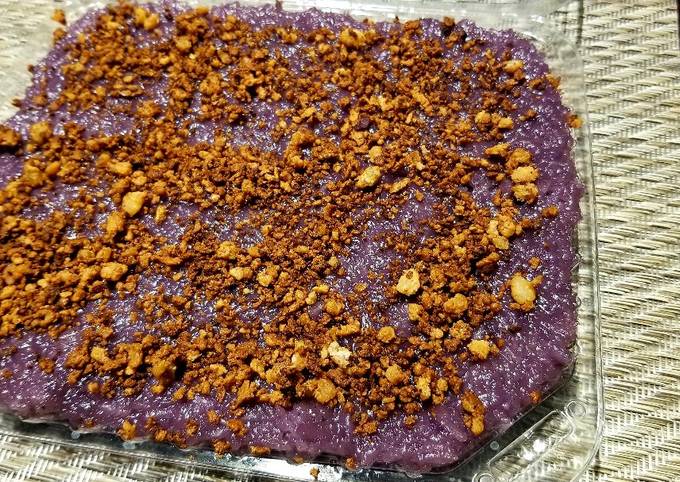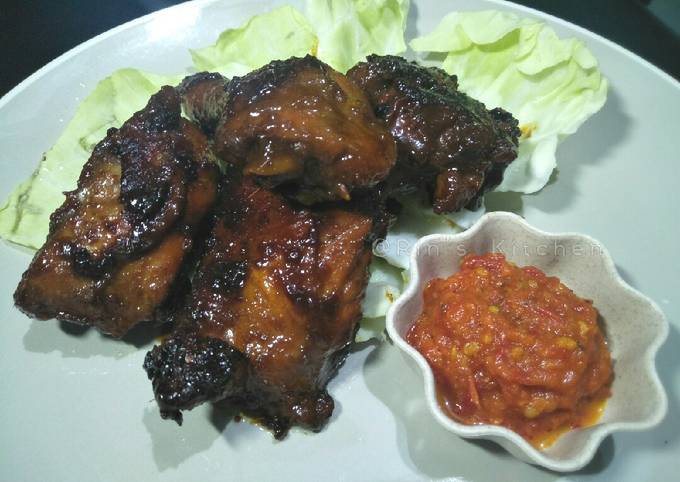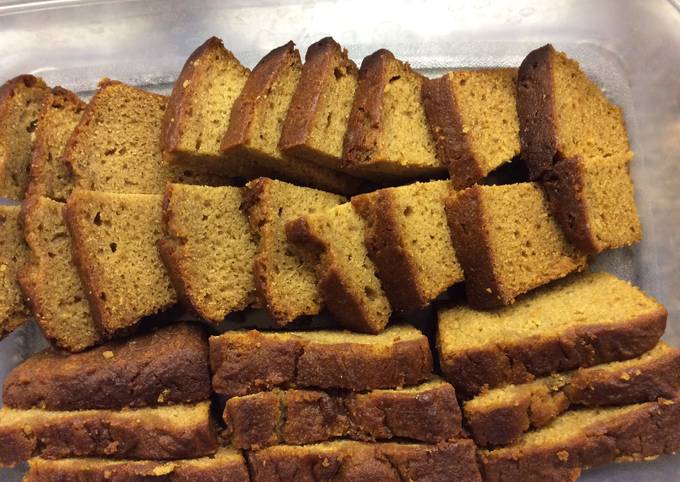
Hey everyone, it is Louise, welcome to our recipe site. Today, I will show you a way to make a distinctive dish, biko (filipino rice cake). It is one of my favorites food recipes. This time, I will make it a bit tasty. This will be really delicious.
Biko, a Filipino delicacy also known as sticky rice is a sweet rice cake made from glutinous rice, coconut milk and brown sugar topped with latik. An easy to make homemade snack or dessert. For this one, I am adding munggo or red mung beans. You can omit the mung beans if you prefer to make just the traditional biko.
Biko (Filipino Rice Cake) is one of the most favored of current trending foods on earth. It is easy, it is quick, it tastes yummy. It is appreciated by millions daily. They’re fine and they look fantastic. Biko (Filipino Rice Cake) is something which I have loved my whole life.
To begin with this particular recipe, we must prepare a few ingredients. You can have biko (filipino rice cake) using 6 ingredients and 9 steps. Here is how you cook it.
The ingredients needed to make Biko (Filipino Rice Cake):
- Get 2 cups glutinous rice
- Make ready 4 cups coconut milk (kakang gata/ 2 cans of coconut milk will do 400 ml each)
- Prepare 2 cups water
- Make ready 1 cup brown sugar
- Take 6 drops ube essence (optional)
- Make ready 1 tbsp vegetable oil
Biko is a rice cake made out of glutinous rice cooked in coconut milk and palm sugar then topped with caramel, latik (a type of reduced coconut cream) I am so craving for some rice cake now, you can't blame me as I haven't tried them for quite sometime and now is the payback time. While the rice is cooking in the rice cooker, place the coconut milk, brown sugar, anise and a pinch of salt in a sauce pan and bring to a boil making sure that the sugar is completely dissolved. What: A popular Filipino dessert, biko ("bee-koh") is a delicious cake made of sticky (glutinous) rice, coconut milk, and sugar, usually topped with a caramelized coconut-milk-and-sugar reduction called latik ("lah-tik"). It's generally served for merienda (afternoon snack) or as a dessert.
Steps to make Biko (Filipino Rice Cake):
- Wash glutinous rice in a pot or rice cooker. Drain excess water. Add 2 cups of water. Cook glutinous rice like you would with regular white rice.
- On a pan, pour 2 cups of coconut milk and sugar. Set to medium heat and bring to a boil.
- Add 6 drops of ube essence to mixture (optional).
- Add rice to the mixture. Constant mixing (folding motion) is necessary to prevent crusting at the bottom of the pan.
- Keep mixing till sticky enough that it looks like a dough.
- Put biko in a container and push with a spatula to even out surface.
- Cooking latik: In a separate pan, pour 1 can/2 cups of coconut milk. Bring to boil and set to high heat. Keep stirring until paste-like consistency is observed then add vegetable oil to aid in toasting the coconut milk.
- Once browned remove from heat, and drain and squeeze excess oil with a paper towel.
- Spread latik over biko. Serve and enjoy.
What: A popular Filipino dessert, biko ("bee-koh") is a delicious cake made of sticky (glutinous) rice, coconut milk, and sugar, usually topped with a caramelized coconut-milk-and-sugar reduction called latik ("lah-tik"). It's generally served for merienda (afternoon snack) or as a dessert. Biko appears everywhere in the Philippines and no one seems to question its origins—but it. Biko/ Malagkit, Traditional Filipino rice cake Biko or Malagkit is a delicious Vegan and Gluten-free recipe from the Philippines. This food is made with three basic ingredients - sticky rice, coconut milk, and brown sugar this easy Filipino sticky rice dessert tastes divine.
So that is going to wrap this up with this exceptional food biko (filipino rice cake) recipe. Thank you very much for your time. I’m confident you will make this at home. There is gonna be more interesting food in home recipes coming up. Remember to save this page in your browser, and share it to your family, colleague and friends. Thanks again for reading. Go on get cooking!

